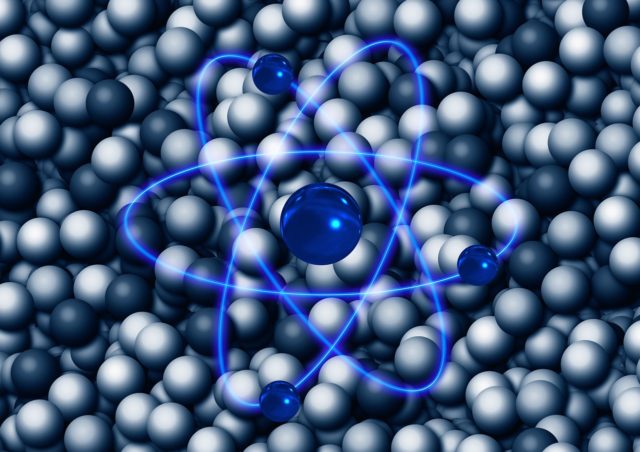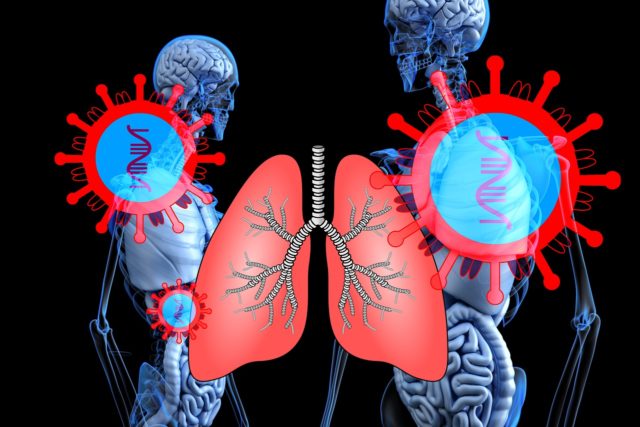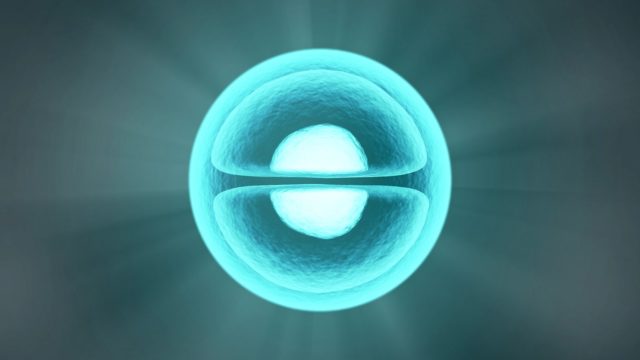As a field of study, chemistry has existed for as long as we can remember. In the early days, alchemists used to study the chemical composition of materials to understand their properties, which could then be used for various applications in the real world. That’s essentially what lab chemists do today, only with modern tools and methods.
As a discipline, chemistry is inherently mysterious, as it deals with the chemical and physical aspect of how substances – particularly their atoms – interact with each other, which is a tall task to complete for all the known substances. While it has applications in almost every other rapidly-advancing field – like medicine, nanotechnology, space exploration, etc. – chemistry in itself remains an area full of unsolved mysteries and unanswered questions.
10. Catalysts
Catalysts are substances that could speed up certain chemical reactions without going through any changes themselves. They’re used in almost every industry we interact with every day – from making beer to building houses to day-to-day cooking. Yeast, as an example, has been used to speed up baking processes since Ancient Egyptian times.
While catalysts are an indispensable part of life, scientists still don’t know how they work. We actually use supercomputers to simulate all the physical, mathematical and chemical processes required to build an effective catalyst for a particular reaction, and it usually returns thousands of possible combinations. It’s a more ‘trial and error’ way of doing it, as we simply don’t know enough about them to just make one on demand.
9. The Iron Pillar Of Delhi
On first look, there’s nothing particularly striking about the Iron Pillar of Delhi. Located in the Qutub Complex – which also houses the much-more-impressive Qutub Minar – it stands at a mediocre height of 23 feet. In fact, it may not even be the best-looking iron pillar in Delhi.
To chemists, though, it’s one of the longest standing mysteries of their area of study. While the pillar was probably built some time in the 4th and 5th centuries AD – based on its inscriptions – it has still somehow managed to remain rust-free. Many researchers have tried to determine the specific chemical composition of the pillar that allows it to do that, though to little success.
8. What Exactly Happens Inside An Atom?

The atom was first discovered around two centuries ago, and since then, many prominent scientists over the years have contributed to our understanding of it. Thanks to them, we know its general structure. All atoms are made up of a largely empty outer shell – which has the electrons – and a densely packed nucleus with protons and neutrons.
That’s also its most mysterious part, as there are still many questions around how the protons and neutrons behave inside the nucleus. Experiments have shown that protons and neutrons in elements with a heavier nucleus appear to be larger than lighter elements, which shouldn’t be possible as all protons are exactly the same size. Researchers have termed this the European Muon Collaboration, or EMC, effect, and we still don’t know if it’s just a measurement error on our part or a whole new subatomic phenomenon we just haven’t discovered yet.
7. Superconductors
Superconductivity is one of the weirdest phenomena we’ve ever discovered. All materials have a certain amount of resistance towards electricity, which remains even when they’re cooled to very low temperatures. This means that all of our electrical devices waste some energy as heat, and there’s not much we can do to stop it.
More than 100 years ago, a scientist called Heike Kamerlingh Onnes was the first to detect superconductivity – materials that lose all of their resistance to electricity when they’re cooled below very low temperatures. Since then, many new superconductors have been discovered with a wide variety of applications in various industries.
Their use, however, remains limited, as it’s a phenomenon scientists are still trying to understand. Superconducting materials behave in wildly different ways in different conditions, exhibiting properties that have never been observed in other places. The best guess at the moment is that superconductivity has something to do with quantum mechanics, as it can’t be explained by our existing models of physics and chemistry.
6. Glass
Glass is one of the most common types of materials around us, with a variety of applications in many fields. It’s been around for a while, too. Records detailing the production process of industrial glass go as far back as Ancient Rome.
Structurally speaking, though, it flies in the face of science, as its chemical composition is unlike any other material we know of. While most of us think of glass to be solid, it’s actually way more complicated than that. From the outside, glass is like any other crystal-type solid we know of, with predictable properties and a static shape. From the inside, though, its molecules are as disorderly as that of a liquid, making its true state fall somewhere between a solid and liquid. We don’t know of any other substance – man-made or otherwise – that exhibits similar properties, making glass one of the most mysterious materials that we use every day.
5. Turbulence
What is turbulence? In classical terms, it’s when liquids and gases – or fluids – go into a chaotic, unorganized state. Think of ocean water rapidly swirling around near rocks, or the quick swirling motion of the coffee when you mix milk in it.
The phenomenon isn’t that easy to understand in modern terms, however, as there’s still no clear, widely-accepted definition of what turbulence actually is. During turbulent flow, the molecules move in a way that can’t be predicted by our current models, even if many scientists have tried to solve this problem in many different ways..
It has to do with the larger problem of expressing the movement of fluids in equations and known mathematical terms, which is still nearly impossible to do. If you want to give it a go, though, you could try to solve the Navier–Stokes equation, which is the first step towards formulating a working equation to explain turbulence. It’s one of the seven Millennium Prize problems posed by the Clay Institute, carrying a reward of $1,000,000 for whoever can solve it.
4. Prions
Prions were first discovered in the 1980s as a new category of disease-causing agents, though they were unlike anything we had seen before. Prions aren’t pathogens, in the way that they’re just distorted and misfolded versions of proteins found abundantly in our own brains, even if they’re as dangerous as most viruses we know of. They’re definitely contagious, though, as prions can come in contact with normal proteins and cause them to misfold, too, eventually forming entire clusters that can shut the brain down.
More than three decades later, we’re still no closer to figuring them out, let alone finding a cure against them. We still have no idea about the specific chemical composition that makes prions behave so differently from everyday proteins, other than the fact that they’re just differently folded. If left unchecked, prions can cause serious diseases – like Mad Cow’s and the rare Kuru – that affect the brain in ways similar to neuro-degenerative disorders like Alzheimer’s and Parkinsons.
3. The Mpemba Effect
The Mpemba Effect – or the phenomenon wherein hot water freezes faster than cold water – has fascinated thinkers and scientists for a long time, and historical references to it go as far back as Aristotle. It’s only observed in water – the most abundant substance found on Earth – though we still don’t know how it works. .
While many different researchers have independently discovered the phenomenon over the centuries, it’s named after Erasto Mpemba – a Tanzanian high school student who noticed it during a random experiment in 1963. He, with the help of his physics teacher, Dr. Denis Osborn, went on to write a paper describing the effect in detail. Since then, many theories have been proposed to explain the phenomenon, though without much success.
2. RNA

While RNA was discovered only a few decades after the discovery of its more popular cousin, DNA, more than a century ago, we still know surprisingly little about it. For the uninitiated, both RNA and DNA are nucleic acids responsible for the production of proteins in our cells, which form the building blocks of all forms of complex life. DNA holds the genetic information that gets written into RNA – specifically messenger RNA, or mRNA – that’s in turn used to encode the proteins.
Since its discovery, many more types of RNA have been found that have nothing to do with the procedure of forming proteins, both in nature and our own body. Only 3% of our DNA’s code is converted into messenger RNA – about 80% goes to other, unknown types of RNA that don’t know much about.
Over the years, scientists have discovered that the RNA can act as a catalyst for chemical reactions inside the cell (a function previously thought to be limited to proteins), encode genetic information, and even edit its own genetic code, like DNA. Moreover, they recently found a whole new type of RNA – microRNA – that can bind itself to mRNA and alter our gene expression without re-encoding proteins, something we’ve only started to understand.
1. How Did Molecules Give Birth To Life?

While it’s impossible to define life and all its complexities just in terms of the chemical composition of its most basic parts, at the end of the day, that’s really how it all started. The first stages of the origins of life on Earth involved nothing but chemical reactions, as atoms and molecules randomly interacted with each other in just the right way to create the first organic substances – like amino acids, simple sugars etc. – that now make up our cells.
Exactly how that happened remains one of the biggest mysteries of evolutionary sciences. From everything we’ve learned, pre-existing life is a strict requisite for making more life, and we’ve never observed any natural phenomenon that defies that rule. Despite trying many times, scientists have never been able to produce organic materials from non organic substances in the lab, and yet, somehow, the earliest living cells were able to do it. While many theories have tried to explain it, it’s one of those big questions of life we’d likely never be able to answer.